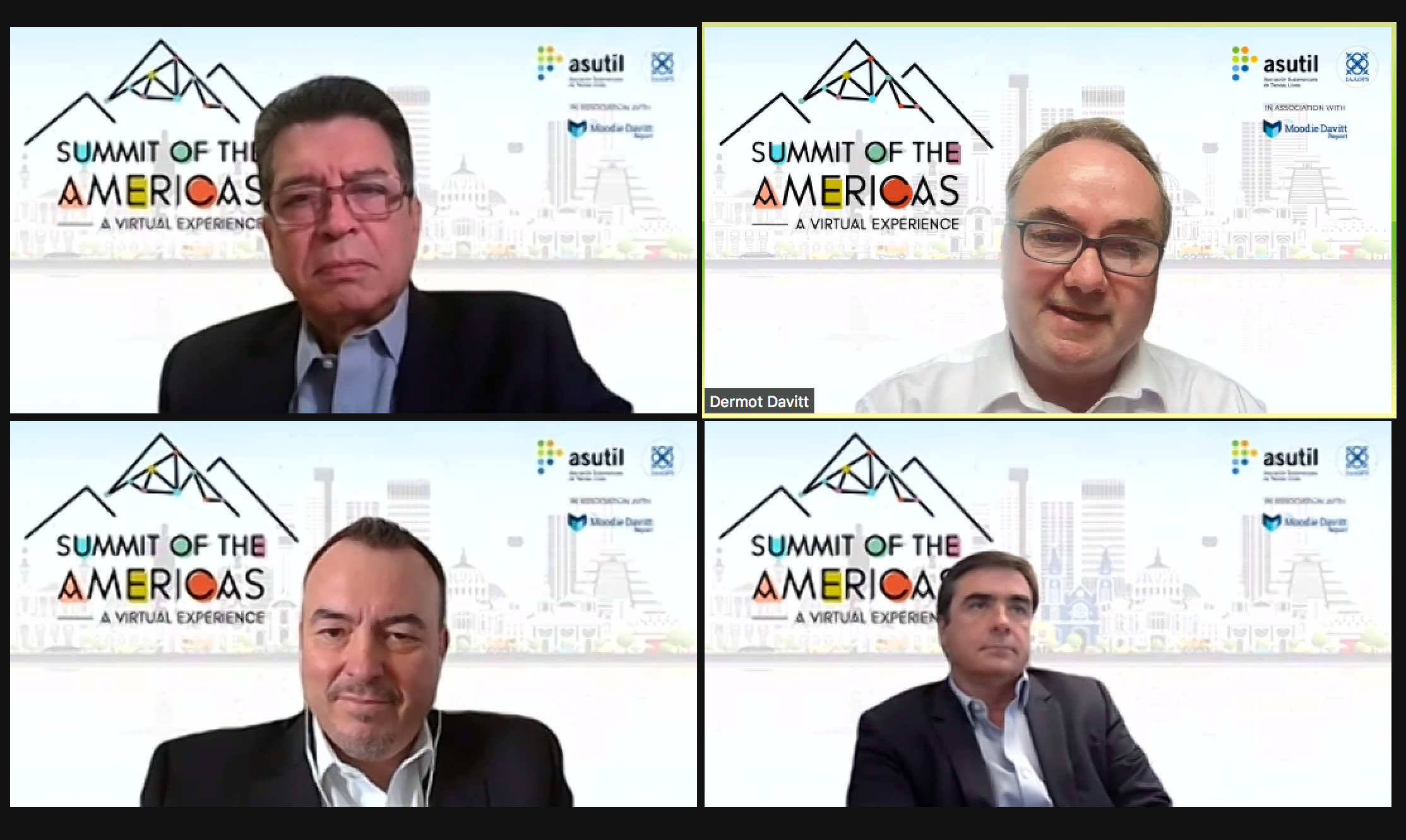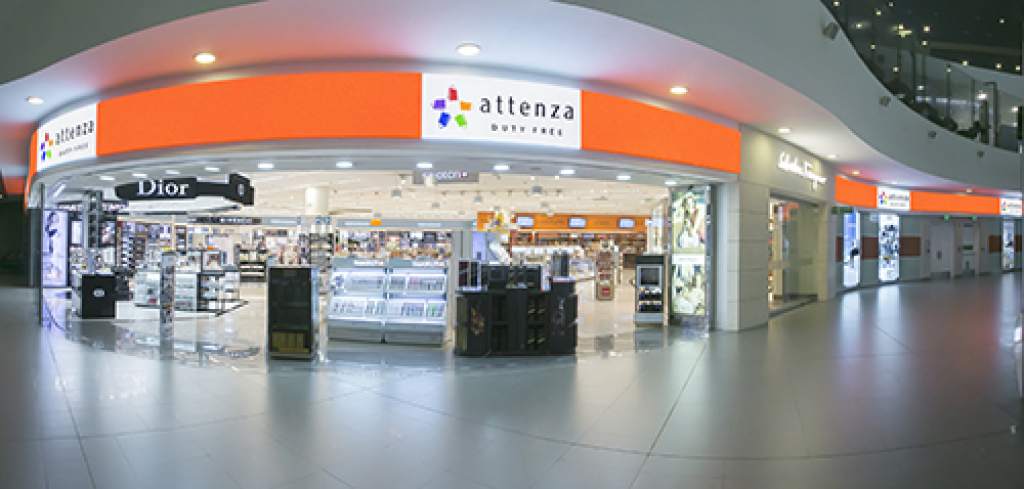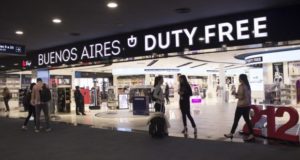THE AMERICAS. The strong views of influential names from Americas travel retail ensured that the opening panel discussion of the Virtual Summit of the Americas on day one, 5 April, got off to a fascinating start, as key subjects regarding the Trinity relationships between airports, retailers and brands in the region were discussed in-depth.
Participating in a live interview with Moodie Davitt Report President Dermot Davitt, under the theme Road to Recovery: The Retailer Perspective, were 3Sixty Chief Operations Officer Alex Anson-Esparza, Motta Internacional Senior Vice President Aurelio Barria and Dufry General Manager Sub-Cluster South America Enrique Urioste.

Opening with a snapshot of the current trading situation for airport retail across the Americas, Barria and Urioste reported that business is at best standing at about 20% of 2019 levels in Central and South American countries.
“If some airports think that they can revert back to historical rents before this traffic, it could spell a crisis for many travel retail operators” –3Sixty Chief Operations Officer Alex Anson-Esparza
Anson was able to present a more encouraging picture across US airports, with domestic travel activity achieving retail business of up to 60% against 2019 in the previous week. Conversely, he also reported that many of 3Sixty’s airline partners, such as Air Canada and Avianca, have yet to resume selling products onboard flights.
However, Anson said, some of that lost inflight income has been made up with a developing ecommerce offer, reporting a “good evolution of sales” across all the countries in which 3Sixty operates.

Urioste, meanwhile, agreed that digital “is a key tool to bounce back sales”, and that progress is being made by Dufry with contacting the passenger before they get to the airport and “getting to know them better”. This, he said, is being partly achieved by “a collaborative environment, reinventing the relationships within the aeronautical community” on the digital front, to combine efforts to offer the passenger a better experience. This, he noted, encourages them to spend more across the various airport non-aeronautical airport services, including retail.
Barria, too, reported good progress on using digital methods to increase the sales of Motta Internacional. He said: “We have to be creative and we have to promote sales before the passenger arrives at the airport. We’re promoting, with very good results, the reserve and pickup [of products] at the airport, which is something that is attractive to many passengers.”
“The airports say that they have their expenses that they need their income, but we tell them that it’s better to negotiate a good deal, than to have a closing store – because once you have a closing store, we all lose” – Motta Internacional Senior Vice President Aurelio Barria
Asked about 3Sixty’s work in using digital to drive engagement with the consumer, Anson said: “Making big efforts to get to know the customer [using digital methods] is already bringing us big advantages in working with airlines. Fundamentally, the airlines know who is travelling with them from when they make their reservations. In many cases, in excess of 60% of airline bookings are made directly, rather than through booking platforms.”
He continued: “They know the times of travel, and whether it’s a family or business trip, and so on. This customer understanding is right at the heart of ecommerce, and it has been a massive enabler to have the phoenix rising out of the ashes, so to speak, to deliver and develop effective ecommerce solutions.”
Anson said that this accelerated thinking on the digital front due to COVID-19 is bringing forward digital revenues for airlines earlier than might have been expected, in one to two years, rather than three to five.
“In the inflight world, it’s become critical. We’re investing to accelerate our strategy and we feel very strongly about that. We already have the facts at hand to prove to us that it is the right strategy based on the results that we’re seeing.”

Airport retail, however, represents a different challenge on the digital front, Anson asserted. “We are no longer immune to consumer trends outside the airport [such as the rise of ecommerce]. And therefore I think we all recognise we need to invest to find these solutions, because the consumer will expect them from travel retail in the same way that they are already seeing them in domestic retail.”
Urioste said that digital has a big role to play in delivering a better experience for the passenger as they travel. “We need to use as much artificial intelligence as we can, we need to know and understand the passenger,” he said. “We need a joint effort with our Trinity partners and airlines to make sure that as from the moment that the passenger buys the ticket, travels to airport, shops, dines and then boards, it is the best experience in the world.”
“Go back to offering those items that you can only get at the airport, that special present that is only available in our channel. That is part of the magic we need to recover” – Dufry General Manager Sub-Cluster South America Enrique Urioste
He continued: “So I think it’s this new world or this new reality that has forced all of us to reinvent ourselves, and collaborate. If we don’t grab it, we don’t work it, and we don’t build it, we will have missed a huge opportunity.”
Moving the focus to airport-retailer contracts, the three panellists were in clear agreement that while temporary relief measures granted by airports on Minimum Annual Guarantees (MAGs) have been welcome, a new model must quickly emerge and stay in place for the longer term, not just for the height of the pandemic crisis.
Anson said: “I think the biggest risk that we have in the next three years – other than the inherent COVID risks – is that some airport commercial departments will see the positive evolution of domestic traffic as an enabler to go back to the rents that were being charged to duty free retailers in the international environment, which we all know cannot happen.

“There’s been lot of agreed rent reliefs throughout the industry in 2020 and in 2021. I think critically, we need to be working with our airport partners to make sure those remain in place until the traffic does come back to similar levels to 2019. If some airports think that they can revert back to historical rents before this traffic, it could spell a crisis for many travel retail operators.”
Speaking of the airport-retailer relationship, Urioste said: “Together we have to reinvent this. We will have to go back to a model where we share the success of the business coming back together. I think that the new world is going to be about risk sharing. The airport delivers the number of passengers, we commit to extract X amount of money for passengers delivered… a MAG per pax basis.
“I don’t know if I am being too optimistic… but I think that this model is a fair model. It’s a model that during the crisis has been in place in the vast majority of airports. And it’s the way that I think that the future will take us.”
Barria also emphasised the need for a revision in contract structures: “We have to change the rules of engagement. Definitely, we can no longer work with the same conditions that we had before. When we originally met to discuss the contracts, we were given an estimation of passengers for the time of concession for ten years with an annual growth of 6-7%.
“Now, it’s going to take many years to even come back to those projections, and in some cases we will not even see that during the concession contract period. I agree that we have to have a relationship paying a variable percentage [of sales to the airport], according to the levels of passengers that we have. But we can no longer pay MAGs at the level we agreed to pay when we started the relationship.”

Asked what progress is being made by Motta Internacional with airport partners on this front, Barria replied: “We are working to convince them. We have a lot of elements and criteria to make them understand that they are not guaranteeing the passengers they promised to have, and that we no can no longer pay the minimum rental guarantee.
“The solution is complicated but there are a few possibilities that we can agree with the airport to set the minimum guarantee to a percentage of the passengers that were registered during the month before.
“The airports say that they have their expenses that they need their income, but we tell them that it’s better to negotiate a good deal, than to have a closing store – because once you have a closing store, we all lose.”

Continuing the subject of partnerships, Anson offered a strong view on how brands must keep an eye on the bigger picture of what travel retail has delivered for them over the years in terms of revenues. They must continue to invest in the channel, he said, highlighting that the big spending passengers like the Chinese will eventually return.
He continued: “[What we are experiencing now] is a short-term blip in the evolution of travel retail. This is not forever. We need them [the brands] to be committed to our region and our channel so that we’re ready for the resumption of the international long haul customer. They will come back in six, nine, 12 months. They will be there.
“That means in the short-term our partnership talks [with brands] need to ensure we are sharing the pain on working through inventories and investing in aggressive promotions, to navigate the short and medium term.
“The same customer expectations are there as before the crisis. We have to make sure we continue to invest our capital in driving sales and innovate, working alongside our suppliers. That’s the model we have, we must co-invest.”
Anson’s views were shared by Urioste, who talked of rediscovering “the magic” of travel retail. He said: “I think we need to go back to basics, remembering 20 years ago those exclusives that were only found in travel retail. We need to sit down and reinvent the wheel.
“Go back to offering those items that you can only get at the airport, that special present that is only available in our channel – products made in the country [of the host airport] that were only available in those regions. That is part of the magic we need to recover.”
You can watch the full Americas retailer session here.














